10 Things We Learned From WWE SummerSlam 1995
Vince McMahon left Razor Ramon & Shawn Michaels in a tough spot...

Jul 28, 2018
We've seen it happen before: WWE finds itself in creatively stagnant times, or quite possibly even in the midst of general tumult, and yet they still manage to pull a great show out of their ass. SummerSlam 1995 was one of those shows, an astonishing artistic achievement in otherwise very troubled times for WWE. Granted, WWE didn't exactly regain its former powerhouse status overnight on account of the show's excellence (nor would such reclamation take place for years), but it was nice to see a great WWE show for a change.
Most of the credit for SummerSlam 1995's raves goes to Razor/Shawn II: Ladder Boogaloo, and deservedly so. Shawn Michaels and Razor Ramon were tasked with trying to outclass their landmark WrestleMania X Ladder Match for the Intercontinental title, and to their credit, they may well have equalled its greatness. Art is subjective, but there are many who hold the Pittsburgh version on the same level as its New York predecessor.
Sure, the night had its share of clunkiness (looking at you, main event), but no matter, SummerSlam 1995 was an oasis in the barren desert that was the decaying mid-nineties WWE, and was a refreshing change of pace.
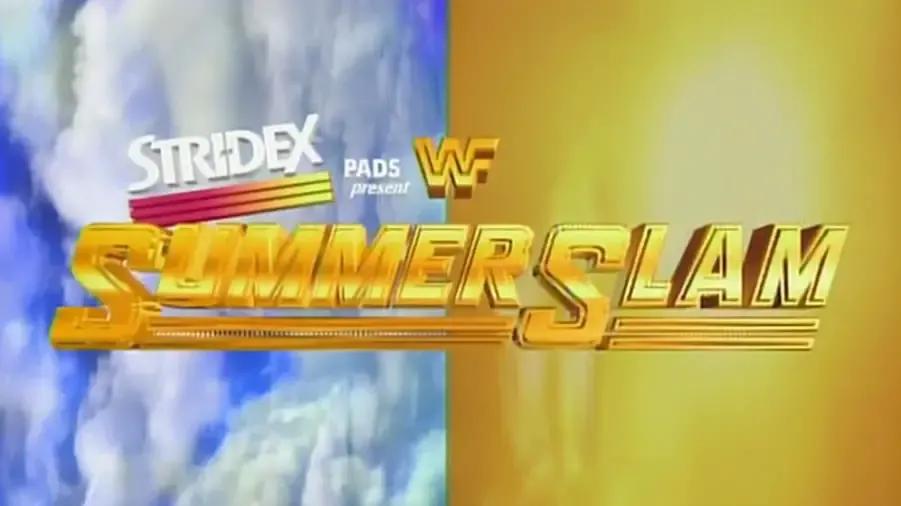
The WWE pay-per-view calendar used to feature a little more variety when it came to show days. Survivor Series started out on Thanksgiving night before moving to Thanksgiving Eve in 1991. Some Royal Rumbles would be held on Saturday nights in the early nineties. SummerSlam was also a special case, as each of the first seven editions took place on Monday nights, filling in for Raw or Prime Time Wrestling when they were pre-empted for US Open tennis coverage.
Things changed in 1995, when each of the pay-per-views were moved to a more static Sunday schedule, including SummerSlam. One good reason for doing so had to do with the TV taping schedule, which would see WWE tape four weeks worth of Raw the night after a pay-per-view, and four weeks of Superstars taped the next night. By moving all pay-per-views to Sundays, this made the schedule of the day more conveniently symmetrical.
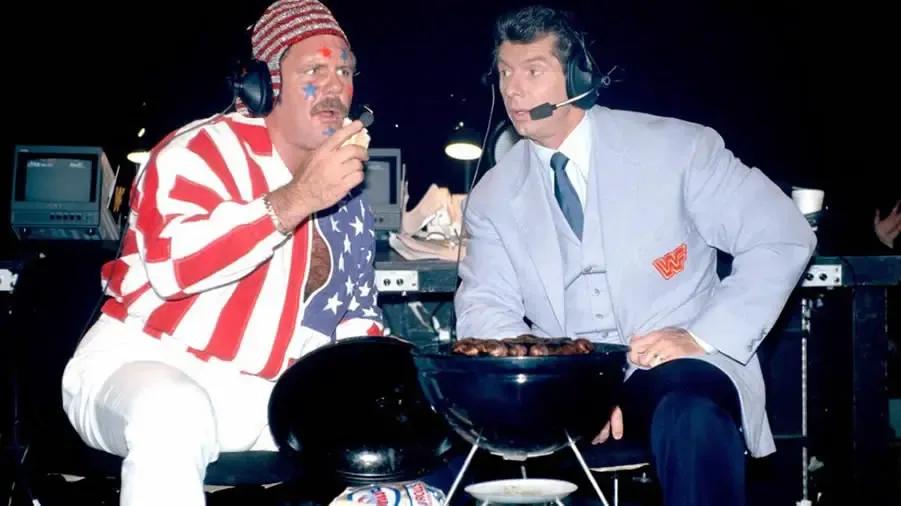
It was mentioned earlier that by this time, WWE's business was deep in the toilet. Fan interest was waning, as live event attendances had drastically plummeted from even a few years earlier. The WWE roster had been trimmed to around 45 active performers, and note has already been made of the cost-cutting measures undertaken when it came to their marathon TV taping sessions.
WWE also resorted to cutting the cost of SummerSlam down from $27.50 to $24.95, hoping the minimal price reduction would be enticing to fans not as keen in 1995 to order one of the company's pay-per-views. It didn't work: SummerSlam 1995 only did 205,000 buys, down almost a full third from the 300,000 that the 1994 show brought in. In all, the 1995 version made about $1.5M less in revenue than its predecessor.

Conspicuous by their absence at SummerSlam 1995 were Tag Team Champions Owen Hart and Yokozuna, whose sole appearance came at the end of the night in order to promote the main event of the following month's In Your House. Originally, Owen and Yoko were set to face off with The Allied Powers at the event, only for the match to be scrapped. Since Davey Boy Smith turned heel at the previous Raw tapings, one would assume that his turn would have come in the SummerSlam match that wasn't.
Replacing that title bout was the Smoking Gunns' match with Eli and Jacob Blu. Some midcard wrestlers were grumbling about lower payoffs due to the decline in business, so it was decided to feature some midcard talents at SummerSlam in order to mollify them with pay-per-view dollars. The Gunns and the Blus had reportedly been having good matches together at house shows, and were given the SummerSlam stage to try and replicate those efforts. Sadly, the bout couldn't quite match their prior work.

It wasn't exactly a high mark for women's wrestling when veteran bruiser Bertha Faye defeated Women's Champion Alundra Blayze in a short, bad match for the belt. The only consolation here is that it wouldn't even be the worst title match of the night.
This marked the last time that the WWE Women's Championship would be defended on pay-per-view until November 1998 when Sable would defeat Jacqueline for the belt at that year's Survivor Series. Blayze would regain the belt from Faye on an episode of Raw in October 1995, but the division would die out shortly after Survivor Series. Blayze was released from her contract as part of the company's ongoing financial problems, and she would infamously bring the belt with her onto the set of WCW Nitro, where she dropped it in a wastebasket.

In February 1995, an individual would wrestle dark matches at concurrent Raw and Superstars tapings in the state of Georgia, defeating enhancement talents Reno Riggins and Buck Quartermaine on back to back nights. Six months later, said individual would wrestle his first televised WWE match, taking on Bret Hart at the 1995 SummerSlam. He was then Dr. Isaac Yankem, DDS, Jerry Lawler's gingivitis-plagued personal dentist, and he still wrestles occasionally for WWE today.
It's amazing that a man brought into WWE to play the silly role of deranged oral hygienist would go on to hold tons of championship belts (including several World title reigns), take part in many memorable angles, become something of a reliable elder statesman, parlay his fame and success into politics, and still take part in matches in his fifties. While Kane is infinitely more famous than Yankem, few would have watched Glenn Jacobs' first televised match at the 1995 SummerSlam and predicted his ensuing career path.
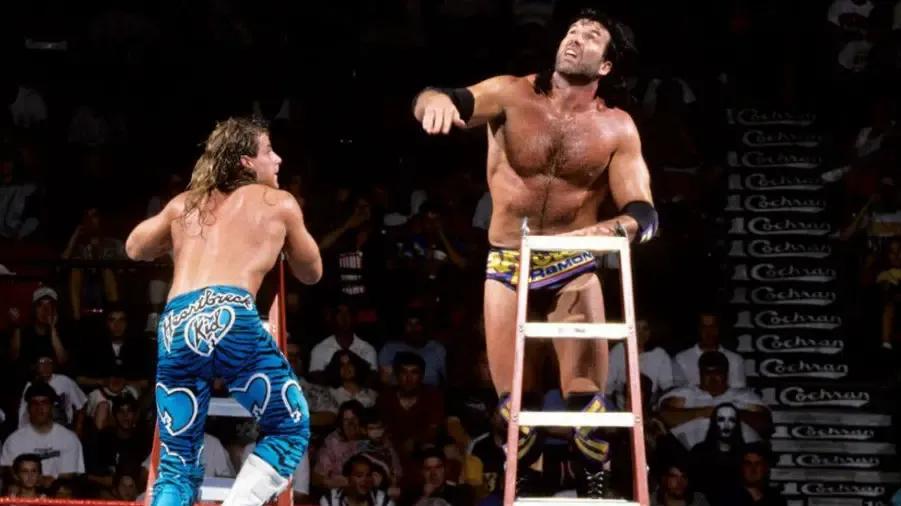
It's hard to imagine the 1995 SummerSlam without Michaels and Ramon's more-than-worthy sequel to their WrestleMania X all-timer. Easily, their clash took home Match of the Night honors, and it easily rates among the greatest WWE matches of all time, let alone the 1990s. And yet, we were almost given something entirely different.
The original plan for Michaels (who defeated Jeff Jarrett for the belt the previous month) was for him to renew his feud with Psycho Sid, and defend the belt against him instead. New kayfabe President Gorilla Monsoon changed the match to Michaels/Ramon in yet another Ladder Match as a means of 'giving the fans what they want', a way to endear Monsoon to the fans as a benevolent shot-caller. Michaels did face Sid on Raw several weeks after SummerSlam (the first Raw to go head to head with Nitro), and defeated him in a good-enough match, but nothing like his battle with Razor.
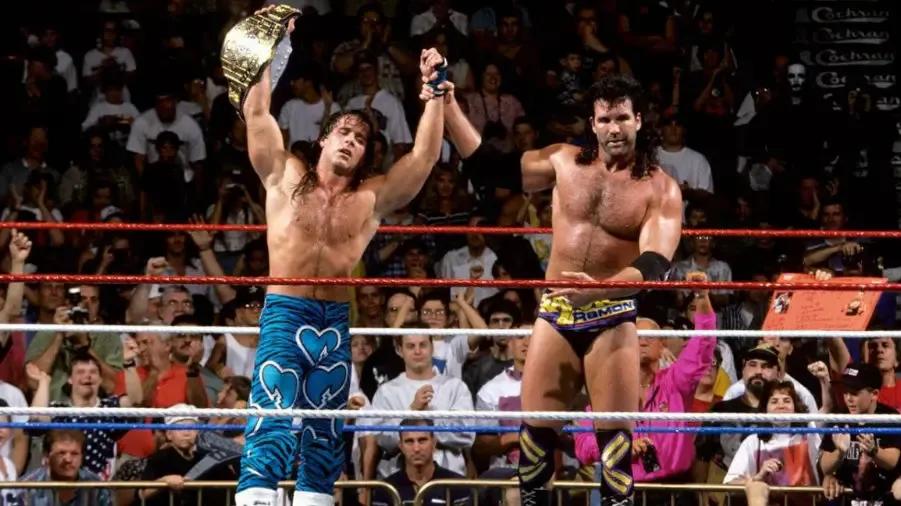
In our
1994 SummerSlam list, we noted that Bret and Owen Hart were met with some strict guidelines in regards to what they were allowed to do in their Steel Cage Match for the WWE Championship due to the crackdown on televised violence that was being bandied about by lobbyist groups. Michaels and Ramon had the same difficulties for their Ladder Match, as McMahon told them in no ambiguous terms that the ladder could not be used as a weapon.
Michaels and Ramon protested, but it was no use. The two, along with their Kliq allies, spent the night before the pay-per-view trying to put together a match that would still be incredible, while adhering to the skin-tight rules. It was a young Triple H who told them that they could still jump off the ladder, and they could still be thrown into it as though it were the turnbuckles. With these facts in mind, Michaels and Ramon assembled a sheer beauty of a match, with Ramon dropping the ladder on Michaels' leg the only spot that came close to violating Vince's edicts.
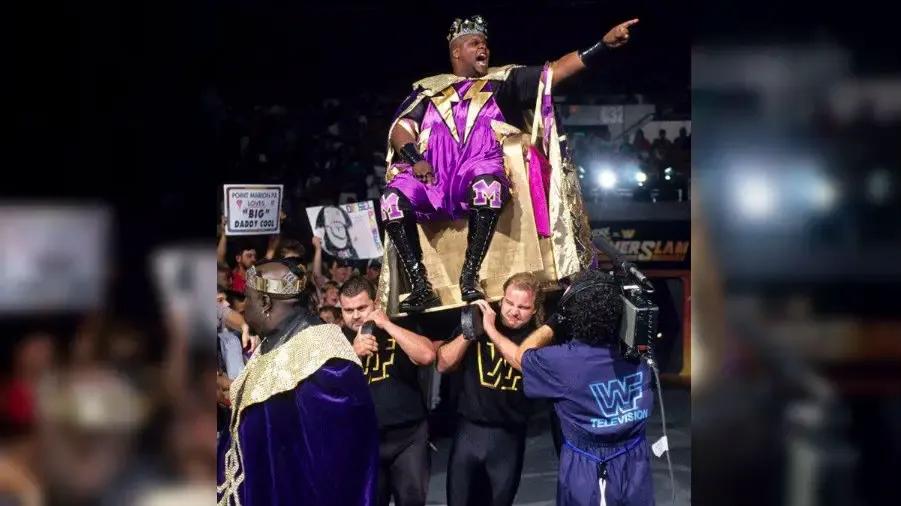
The real-life Nelson Frazier had unfortunately garnered a reputation as a clumsy performer, to the point where he had injured, or would go on to injure, a handful of WWE talents. He'd previously hurt Headshrinker Fatu in a match, and would later crush Undertaker's orbital bone with a haphazard strike. At SummerSlam, he would manage to hurt Diesel during the World title main event.
Midway through the bout, Mabel rolled Diesel over onto his stomach and executed a Sitout Splash onto Diesel's lower back, despite the champion's prior request for Mabel to not perform that move. When executed, Diesel noticeably cried out in pain, and can actually be heard loudly cursing Mabel out for his carelessness. Kevin Nash would say that it took him a few minutes to get the feeling in his legs back. Once the show was off the air, an angry Vince McMahon reportedly tried to fire Mabel on the spot, but was actually talked out of it by a forgiving Nash.
Luger's involvement in SummerSlam was to see him run interference in the main event, preventing now-former partner Davey Boy Smith from assisting Mabel and Mo in their bid to end Diesel's championship reign. Comically, the cues were off, and Luger ended up hitting the ring first, only to be struck by an annoyed Diesel (the man he was supposed to be helping). SummerSlam 1995 would be Luger's last televised appearance in a WWE ring.
At the time, Luger did not have a WWE contract and was already in touch with Eric Bischoff and WCW. Luger taped appearances for WWE's September TV shows in the days after the pay-per-view, then worked the following week's house show loop which wrapped up in eastern Canada the night before the premiere episode of WCW Nitro. Without the knowledge of anyone in WWE, Luger then flew to Minneapolis, where he would show up in grand fashion on Nitro, stunning the wrestling world.
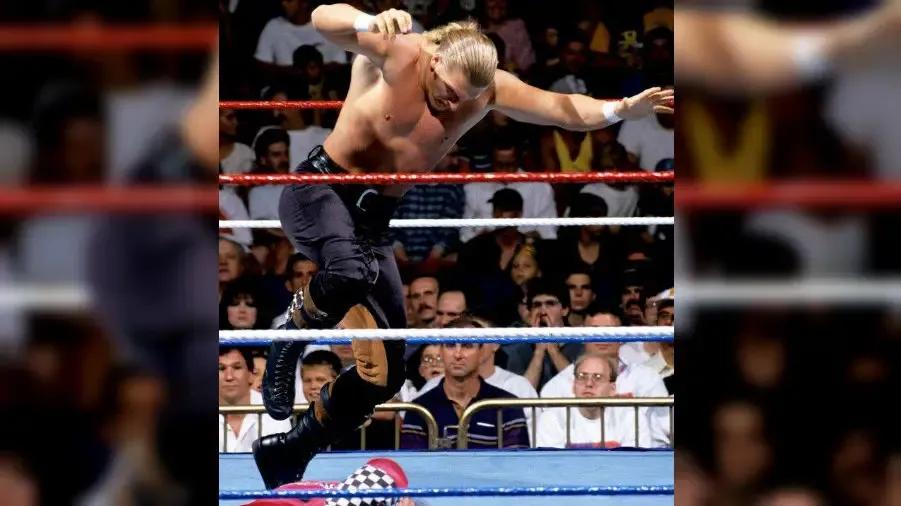
Twenty individuals wrestled in the nine matches at the 1995 SummerSlam, many of them relatively new faces to the fold, be they Chris "Skip" Candido, Hunter Hearst Helmsley, the aforementioned Isaac Yankem, among others. Compared to the 16 performers that took part in matches at SummerSlam 1994 just one year earlier, the differences were rather stark.
Only six of the 20 wrestlers on the 1995 show wrestled at the event one year earlier: Bret Hart, Diesel, Razor Ramon, The Undertaker, Mabel, and Alundra Blayze. The other 14 consisted of performers who were there but simply didn't wrestle on the 1994 show (Michaels, The Smoking Gunns, 123 Kid), or were part of the cadre of new talents that the audience was still taking time to get used to. Or, based on the dwindling numbers, new talents that didn't exactly provoke much interest.